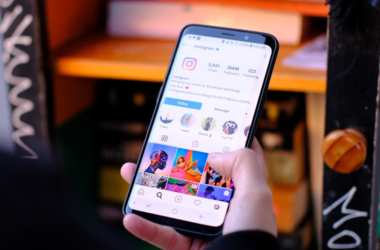- Tension: We want fast food to be guilt-free and emotionally satisfying—but the way it’s marketed often reinforces internal conflict.
- Noise: Viral campaigns, celebrity tie-ins, and TikTok stunts dominate the conversation, distracting from the deeper dynamics at play.
- Direct Message: Fast food marketing isn’t just about appetite—it’s about identity, nostalgia, and the illusion of choice in a world shaped by algorithmic attention.
This article follows the Direct Message methodology, designed to cut through the noise and reveal the deeper truths behind the stories we live.
Why fast food marketing hits deeper than your cravings
You know the jingle. You’ve likely scrolled past the influencer’s taste test.
And at some point—maybe after a long day or a nostalgic craving—you’ve probably stopped for a bite.
Fast food is everywhere, but so is the discomfort we feel around it.
We want to eat better, live longer, shop local. Yet we still queue for the new burger drop or tap into an app for the quickest chicken sandwich.
The marketing behind fast food doesn’t just sell convenience—it shapes culture, behavior, and even self-image.
And increasingly, it leverages every tool of modern attention economics: AI, personalization, micro-moments, and memes.
But beneath the flashy campaigns and flavor-of-the-week menu items lies a deeper tension—one that’s not just about calories or click-through rates, but about who we are, and who we think we should be.
Behind the wrapper: How fast food marketing actually works
At its core, fast food marketing follows a simple formula: stimulate desire, minimize decision-making friction, and drive action—fast.
But today’s execution is anything but simple. Global fast food chains are leveraging:
- Hyper-targeted digital ads based on real-time behavior (e.g., if you search for “late night food,” you’ll likely see a Taco Bell ad within minutes).
- Gamified loyalty apps that track purchase behavior, reward frequency, and create stickiness (think: McDonald’s Monopoly or Starbucks Stars).
- Cultural co-signing—collaborations with pop stars, athletes, or influencers who bring emotional resonance and social currency to meals (e.g., Travis Scott’s McDonald’s meal).
The psychological levers are clear: fast food is framed as fun, convenient, and socially endorsed. It’s marketed less as a compromise and more as a personal treat—or even a statement.
But what’s missing in most discussions is the emotional calculus. We’re not just choosing dinner—we’re choosing how we feel about ourselves when we do.
What’s really being served: The identity tension beneath the meal
Fast food isn’t just about hunger. It’s about speed, familiarity, and—crucially—permission.
In a culture that glorifies wellness, productivity, and moralized eating habits, ordering fast food can feel like both rebellion and regression.
We know what we “should” eat—but we also crave the simplicity, the comfort, the familiarity of a branded burger combo.
That’s the hidden tension: we want to feel in control, but we also want to be released from the pressure of endless decision-making and moral judgment.
Marketing taps into that moment of permission. A good ad doesn’t just say “eat this”—it says “you deserve this.”
Whether that message comes from a nostalgia-tinged image of childhood Happy Meals or a confident celebrity saying “this is my go-to,” it’s designed to override guilt with identity reinforcement.
And because fast food intersects with routines (late work nights, road trips, post-party munchies), these messages don’t just drive transactions. They shape behavior loops.
Why the noise around trends hides what really matters
Scroll through TikTok, and you’ll find people reviewing new fast food items like they’re luxury drops. There’s a sense of performance to it all, limited-time menus, themed packaging, mukbang culture.
These trends create urgency, but they also obscure something more stable: fast food’s success isn’t built on novelty. It’s built on emotional habit.
By focusing on the flashy part—the “drop”—we miss the infrastructure beneath it: the algorithms predicting what we’ll crave, the data cycles that adjust pricing and offers, the location-based nudges that ping you just as you pass a store.
Trend cycles make it seem like marketing is all about creativity. But the deeper play is psychological repetition, and shaping environments that make opting out feel harder than opting in.
The Direct Message
Fast food marketing doesn’t just sell flavor—it sells the relief of not having to decide who you are for a moment.
What this means for how we see marketing—and ourselves
If you’re in marketing, it’s tempting to chase virality.
But fast food shows us something subtler: real influence is about emotional positioning. Not just who the customer is, but who they get to be, when no one is watching.
That’s the deeper move: create a brand that feels like a friend who says, “It’s okay. You’re good.” That level of emotional permission is rare and incredibly powerful.
As consumers, we can’t change the ubiquity of fast food marketing. But we can get clearer on what’s happening when we feel pulled in. That pull isn’t weakness—it’s design.
Understanding that gives us choice. Not just over what we eat, but over why we reach for it.






